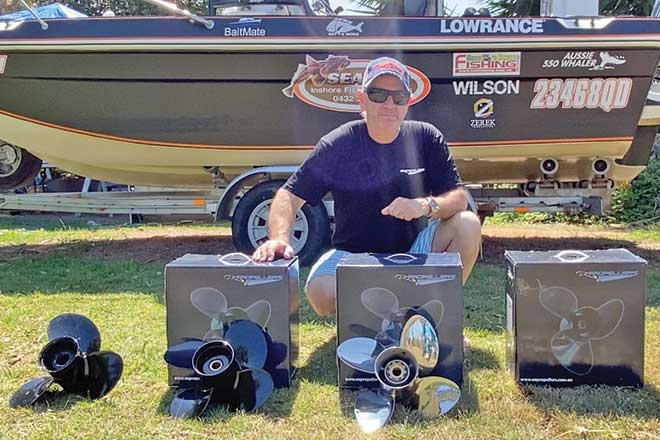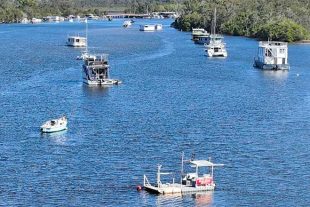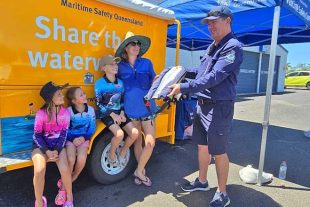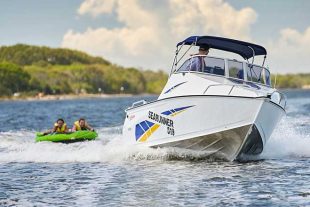Hi crew, for those who read my articles in this publication, you’ll know that I recently purchased an older 5.5m Aussie Whaler as my new work boat.
When I bought the boat, it had a two-stroke OptiMax on the back.
Though it had plenty of power, at 2500 hours, it started to have a few issues.
So, we decided to repower it with another engine and to look for something with the maximum horsepower, which was a 4-stroke 115hp.
It performed quite well in the mid-range and top end with that horsepower, and the particular propeller that motor had.
Unfortunately, we had a lot of trouble getting the boat on the plane – to the point that when the boat was loaded up, it could take me up to 100m or more to get the boat on the plane – which was no good.
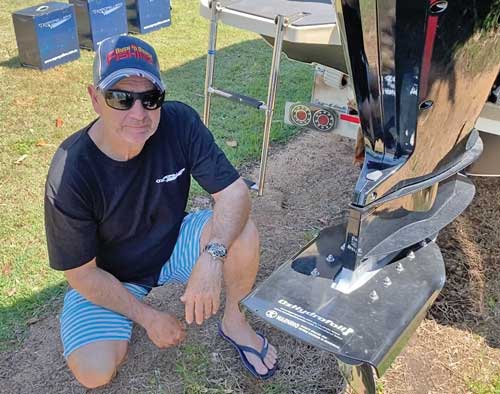
We had to come up with a solution, deciding that the best way to get the most performance out of the boat, would be to see what we could do with different propellers.
After making a few calls, one company stood out. Ozpropellers in Maroochydore was very helpful and quite happy to give me advice over the phone on what I should do.
I told them of the vessel and engine and the performance I was trying achieve from my boat.
With the information supplied, the propeller recommended to me was a three-blade stainless-steel Power Tech RED3 13.25” x 14” pitch.
I asked them how it all worked with payment, postage and if it wasn’t the correct propeller for my boat.
Payment was over the phone.
They package the propeller and send it.
And, if it didn’t do the job and hadn’t been damaged, they were happy for me to send it back and try another propeller.
I also mentioned that, in the past, I hadn’t considered changing propellers to get more performance out of my engines and that perhaps other people were in the same boat, so to speak.
The reason I hadn’t thought about the propellers much was because, as long as my boat was performing reasonably, I didn’t really worry about them.
I told them it might be a good subject to write about – what the differences are by having the right propeller.
So, the crew from Ozpropellers offered to loan me a few different props to put on the engine, so I could evaluate each propeller and its performance on the same boat with the same engine.
And I thought it would be a great idea to provide you with the comparisons.
If you’re looking for more performance, better fuel economy or to get on the plane quicker, this article may help you consider looking at your propeller to get better results out of your vessel.
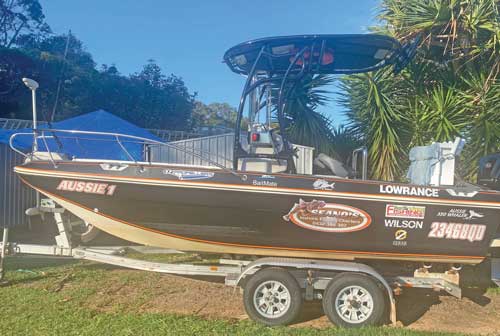
A cheaper option than perhaps remapping an engine to get more power out of it.
Plus, if your engine’s still under warranty, in most cases, changing the propellers won’t void it, which could happen by getting an engine remapped.
To help us get on the plane quicker, we also fitted the motor with one of Ozpropellers’ aluminium hydrofoils.
After picking an area with reasonably smooth water and very little wind, I did all the tests on the turn of the tide in a bay with very little to no tidal movement, and with two people and a full tank of fuel onboard.
I wanted to test how long the vessel took to get on the plane at mid-range speed and how many litres per hour were used at that speed, and again for both at the top end.
These were the results.
Factory propeller
The one the engine came with:
- Size 13 3/4” x 15” pitch three-blade aluminium
- Time to get on the plane: 10 seconds
- At 4500rpm, 22 knots, using 25 litres per hour
- Wide open throttle 5300rpm, 26 knots, using 39 litres per hour.
Propeller 1
Ozpropeller:
- Size 13 7/8” x 13” pitch four-blade aluminium
- Time to get on the plane: 8 seconds
- At 4500rpm, 20 knots, using 25 litres per hour
- Wide open throttle 6000rpm, 27.5 knots, using 44 litres per hour.
Propeller 2
Ozpropeller:
- OZPRO-D4, Size 13 1/2” x 13” pitch four- blade stainless steel
- Time to get on the plane: 5 seconds
- At 4500rpm, 20 knots, using 23 litres per hour
- Wide open throttle 6000rpm 28 knots, using 43 litres per hour.
Propeller 3
Ozpropeller:
- Power Tech RED3, Size 13.25” x 14” pitch three-blade stainless steel
- Time to get on the plane: 6 seconds
- At 4500rpm, 22 knots, using 23 litres per hour
- Wide open throttle 5800rpm, 28 knots, using 41 litres per hour.
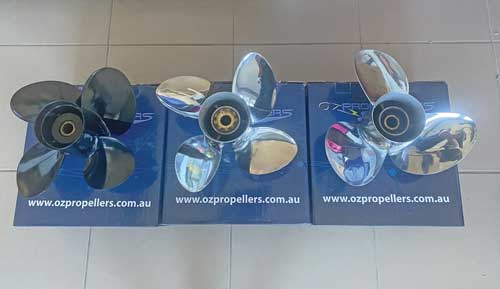
As you can see by the figures, the three-blade stainless-steel and the four-blade stainless-steel propellers are the best options for my vessel.
The four-blade stainless-steel propeller gave the vessel definitely more lift.
So, when you’re on the plane, the vessel itself rides slightly higher in the water, which I think is a good thing – we found it to be a little more comfortable in the chop.
As a result of the testing, we decided to go with the three-blade stainless-steel Power Tech RED3 because in the mid range, it’s gives the best speed and fuel economy.
I was very happy and the crew at Ozpropellers know what they’re talking about – this was their recommendation to me over the phone.
Something to note, if you don’t have the option of testing various propellers.
The lift provided by the aluminium Ozhydrofoil was also great.
So, with those two small investments, we’ve been able to completely change the performance of the boat.
Also, when the product arrived, it came with all the hardware needed to fit the propeller and the finish was second to none – everything was top-quality.
If you’re not getting the full performance out of the engine on your vessel, I suggest giving the crew at Ozpropellers a call on 07 5479 0253 or check out ozpropellers.com.au
 Bush ‘n Beach Fishing Magazine Location reports & tips for fishing, boating, camping, kayaking, 4WDing in Queensland and Northern NSW
Bush ‘n Beach Fishing Magazine Location reports & tips for fishing, boating, camping, kayaking, 4WDing in Queensland and Northern NSW

